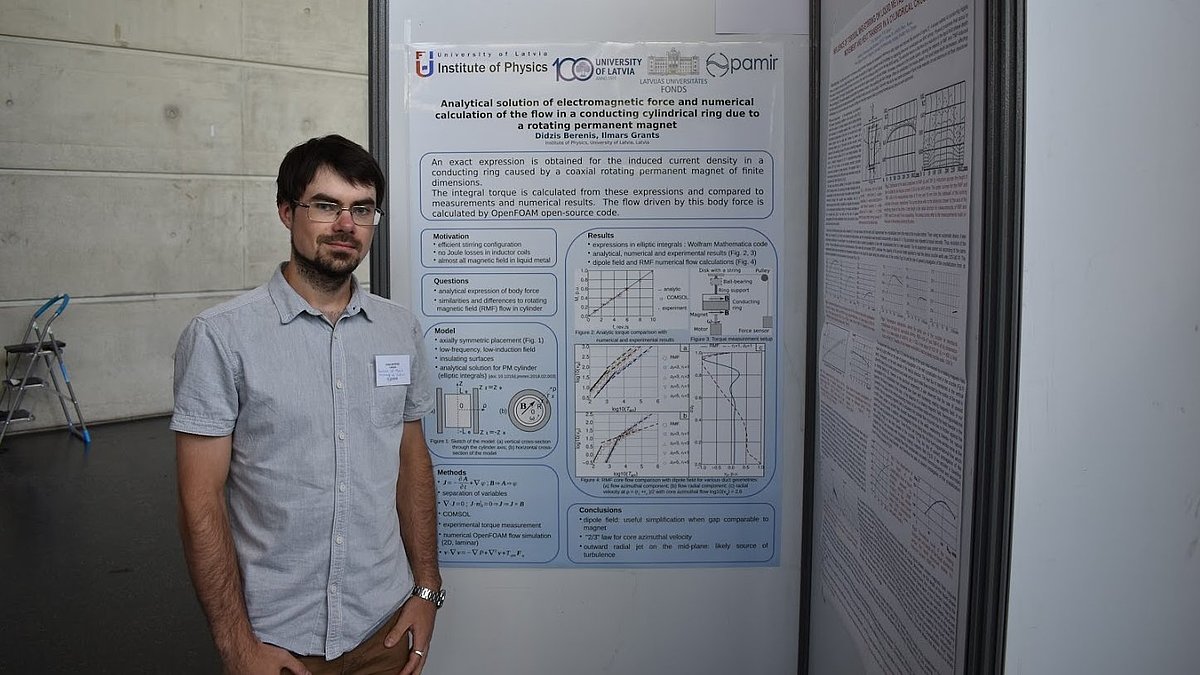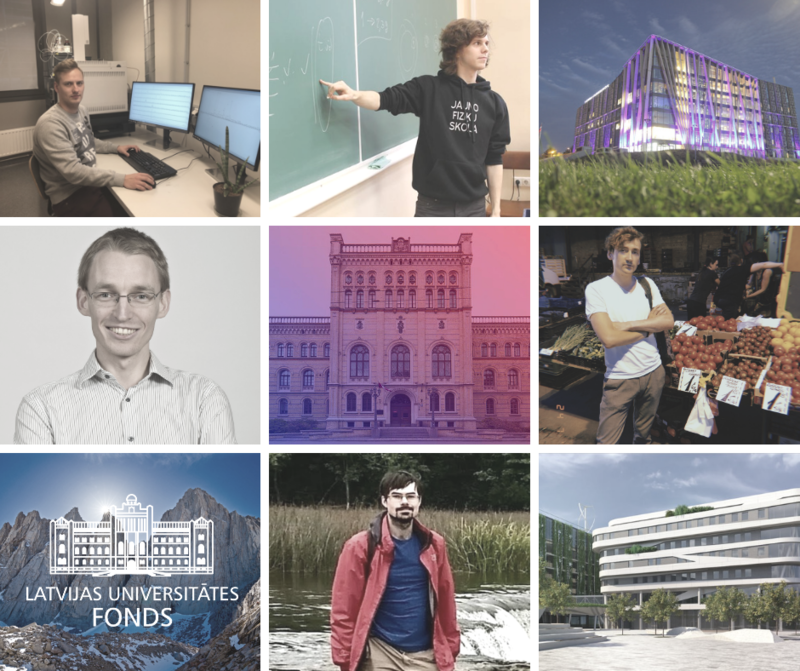Ziņa

Dedication and passionate interest in science has enabled Didzis Berenis, a doctoral student at the UL Faculty of Physics, Mathematics and Optometry (FPMO) to obtain the UL Foundation-administered “Mikrotīkls” scholarship for doctoral students in exact and medical sciences to study the flow of liquid metal generated by rotating permanent magnet stirrers in 20-ton aluminium furnaces. The young researcher explains that magnetohydrodynamics (MHD) and turbulent flow studies have a long history, but their calculations for industrial purposes present difficulties, even when working with powerful computers.
Didzis prepares his doctoral dissertation in the Laboratory of Magnetohydrodynamic Technology at the UL Institute of Physics under supervision of Dr.phys. Ilmārs Grants. The institute has developed world-renowned industrial rotating permanent magnet MHD equipment, including pumps, mixers, heaters, which require calculation of the flow for industrial applications. Didzis continues to work on liquid metal mixers with rotating permanent magnets previously developed by Dr.phys. Toms Beinerts. He studies the flows generated by these mixers. “I invite students and pupils to take an interest in research opportunities at the University of Latvia Institute of Physics and to acquire the research skills early on!” emphasizes Didzis and is happy to explain the essence and future potential of his research.
Magnet liquid metal stirrer developed by Dr. phys. Toms Beinerts (2017). Photo: Toms Grīnbergs, UL.
Please, tell us about your research!
Magnetohydrodynamics plays an important role in metallurgy and in the cooling of equipment with liquid metals, where magnetic forces initiate the flow of liquid metal. The aim of my research is to describe the flow induced by permanent magnet stirrers in multi-ton aluminium furnaces. The processes are multiphysical, and the large size of the equipment impedes the performance of flow calculations with precise numerical methods – it is necessary to find an appropriate calculation model.
To calculate MHD flows, you must first know what force is acting on the fluid. A great advantage is the possibility to obtain an analytical expression for the description of a physical process, such as induced force. It permits to ascertain that the numerical models are correct, as well as facilitates further calculations. If the expression of the magnetic field around a rotating permanent magnet is known, then the currents generated in the liquid metal and thus the force acting on the liquid can be calculated.
The expression of the magnetic field for a cylindrical magnet has been obtained only recently, and this basis has yielded one of the first results of the study – the expression for the force that creates flows in cylindrical and ring-shaped vessels with liquid metal. However, it has not been taken into account that the flow of liquid metal also generates currents, which in the presence of a magnetic field have a flow-inhibiting effect. The interaction between electromagnetism and hydrodynamics is one of the challenges in my study. However, turbulence causes many more complications, which can vary significantly depending on the situation.
What have you done so far?
In the year and a half since I started my doctoral studies, I have acquired valuable skills in computer modelling of flows. I chose the first major task of my doctoral studies, which I could also test experimentally in the laboratory, – to numerically calculate the liquid metal flow induced by the permanent magnet stirrer in a cylindrical vessel and to find a suitable turbulence model. At the same time, I also continued the analytical calculations – using the expression of strength obtained at the beginning of doctoral studies, I also managed to obtain a mathematical formula for the description of the flow.
Although the calculation of a specific flow in a cylinder is a complex task, the resulting flow is constant over time, which facilitates both analytical and numerical calculations. After the work I have completed so far, I am ready for the most difficult task – to perform calculations and study the time-varying flows that occur in aluminium smelting furnaces.
In your opinion, why is it important to support young researchers?
First of all, the scholarship administered by the UL Foundation has given me financial stability and a sense of security. I can focus on my work without seeking or considering additional job opportunities. In research, the time taken to obtain results is often measured in years rather than weeks or months. A young researcher may have difficulty immediately joining a serious research and may not have enough knowledge gained in previous studies. One has to learn a lot on one’s own. In this situation, support is really important and can help to launch a career in research.
Researcher Didzis Berenis participating in the activities of the European Researchers’ Night and during recreation in the mountains (2019). Photos from personal archive.
About the University of Latvia Foundation
Since 2004, the UL Foundation provides an opportunity to patrons and cooperation partners to support both the University of Latvia and other leading higher education institutions of our country, thereby investing in the future of Latvia. The priorities of the UL Foundation are to support the most outstanding, dedicated students and researchers, to advance creation of a modern study environment, as well as to promote construction and refurbishment of university’s buildings.

 CONFERENCE
CONFERENCE
